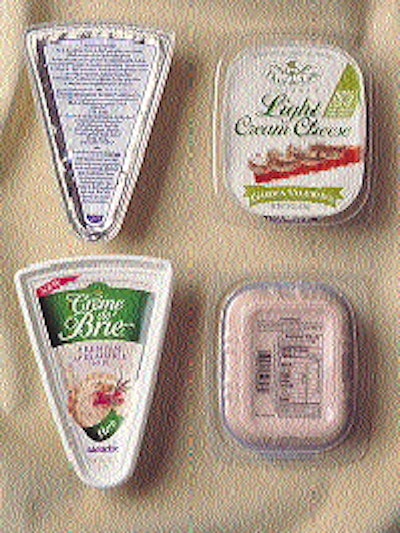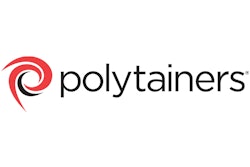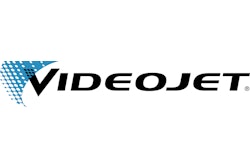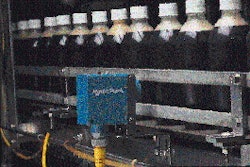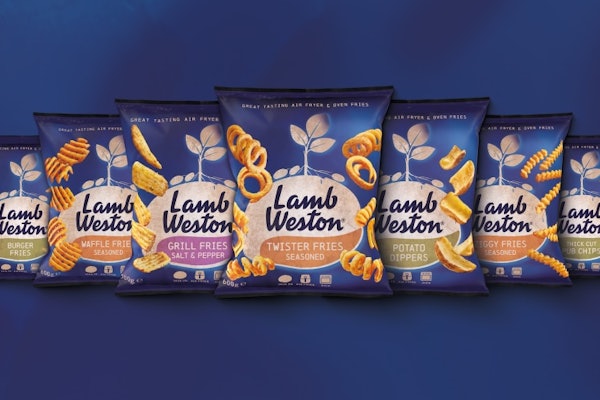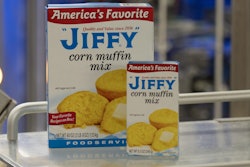Redesign, restage and retool have been the watchwords at BC-USA lately, as the New Holland, PA, cheese and dairy subsidiary of France's Bongrain Soparind Groupe has revamped much of its packaging. The changes vary by product and marketing objectives. For two lines of gourmet spreadable cheeses, for example, the firm wanted an appearance more in keeping with the upscale niche occupied by the product. New "ramekin"-style containers for these products are attractive enough to allow consumers to serve right from the container. For other products, cost savings was the objective. The containers for Creme de Brie and Gourmet Light Cream Cheese had been thermoformed from polyvinyl chloride. These products are switching to a container of clarified polypropylene made via "insert" injection-molding technology developed by Double H Plastics (Warminster, PA). Double H is printing nutrition information and UPC bar code right on the container bottom, so BC-USA eliminates the cost of pressure-sensitive labels it had applied to the thermoforms. BC-USA is spared the task of applying labels as well. Significant equipment changes have taken place, too, most notably for filling the "deli" line of 6.5-oz whipped cheeses sold in supermarket deli sections. A six-up system from Orics Industries (Flushing, NY) evacuates ambient atmosphere from containers and backflushes them with nitrogen to better protect product freshness throughout its 75-day refrigerated shelf life. Peter Ouwerkerk, engineering and development manager at BC-USA, believes this is the first application of modified atmosphere technology in a dairy product. "Some dairy packagers minimize residual oxygen by blowing nitrogen into or across the container to displace oxygen, but they don't remove it first and then backflush as we do," says Ouwerkerk. From standard to standout Before the redesign of the 6.5-oz deli line, there was no secondary packaging at all. The package looked a lot like a standard sour cream or cottage cheese container: injection-molded PP tub and white opaque snap-fit PP closure with a PVC band heat shrunk around the top for tamper evidence. Ingredient information and UPC code were printed in black on the sidewalls of the clear container and the only real graphic impact came by way of the four-color pressure-sensitive label applied to the top of the lid. To the folks in the marketing department, this packaging was too tired and ordinary for a brand commanding a 75% market share. The new packaging is strikingly different, beginning with the injection molded PP ramekin supplied by Polytainers (Toronto, Ontario, Canada). Its white fluted sidewalls are so much more elegant than the drab tub it replaced that consumers can now serve BC-USA's spreadable cheeses right out of the package. Also new is a paperboard sleeve, an 18-pt SBS printed offset in 5 colors by several converters. In addition to giving the product a much more noticeable presence on the supermarket shelf, the inside of the sleeve provides ample space for recipes, serving suggestions, and coupons or other cross-merchandising materials. "The sleeve lets us communicate with customers," says BC-USA president Jim Williams. "It allows us to sell the product benefits in ways we couldn't before." Cutouts on opposite sides of the sleeve allow consumers to see the attractive ramekin inside. More significant are the changes that aren't immediately apparent, particularly a clear inner seal supplied by Rollprint Packaging (Addison, IL). Its application is just one facet of the new Orics fill/seal system. At the head of this machine, nested containers are picked from magazines and placed six across in pockets that take them through filling and lidding operations. "Adequate speed was important, which is why we requested the six-up configuration," says Ouwerkerk. "We're producing about 120 containers/min." After six volumetric fill nozzles deposit the required amount of product in each of the six containers, the containers enter a vacuum chamber controlled by two separate vacuum control systems. Minimizing residual oxygen "This was the only machine we could find that would guarantee us less than 5% residual oxygen in the headspace," says Peter Ouwerkerk. "In fact, we're running at around 2% residual oxygen." The system evacuates so effectively because the vacuum chamber, measuring 42" across and 7.5" in the machine direction, is divided in two. The clear roll-fed lidstock is fed into the chamber from above and oriented horizontally just above the filled cups. When the chamber closes, this lidding material effectively divides the vacuum chamber into upper and lower chambers. First a vacuum is drawn in the upper chamber, lifting the lidding material away from the cups. As air in the bottom half of the chamber is evacuated by a separate vacuum system, ambient air has little opportunity to get trapped beneath the film. As soon as the bottom chamber has been evacuated, the cups are backflushed with nitrogen. Then the vacuum in the upper chamber is released so that the film can settle back down over the cups. Heat sealing and die dutting are next. Finally, the vacuum chamber opens and the cups cycle out to a station that automatically applies a snap fit overcap. Supplied by Polytainers, the overcap is a clear injection-molded polyethylene. "You're not really concerned with the amount of residual oxygen above the film, it's the oxygen below the film that matters," says Orics' Ori Cohen. By partitioning off the bottom chamber, evacuating it with its own dedicated evacuation system, and then backflushing the nitrogen only into that small bottom area, the system controls oxygen more precisely. The clear lidding material is a two-layer lamination of 48-ga polyester coated with polyvinylidene chloride and 2-mil polyethylene with a heat-seal coating. Ouwerkerk suspects the combination of polyester and PVDC may offer more barrier than is necessary. But the material was recommended by Orics, and the recommendation was accepted "for expediency's sake," says Ouwerkerk. The cup's barrier properties are largely a function of its thickness. "At its thinnest point it's 28 mils thick," says Ouwerkerk. "A more conventional thickness for a dairy cup would be more like 16 or 18 mils." "The gas flushing and application of the inner seal allow us to market a fresher product," says Williams. "We're not lengthening the 'best-if-used-by' date, but we feel more assured that what we sell is indeed at its peak of freshness. The evacuation of ambient air in the package is a big help in itself, even without the backflush, because the product is subject to molding. By evacuating the ambient air, you minimize the oxygen on which mold spores can feed." Following the application of the clear overcap, containers are single-filed and pass over a Videojet (Wood Dale, IL) ink-jet coder that applies a best-if-used-by date on the bottom. Then a new automatic sleever supplied by Adco Mfg. (Sanger, CA) applies the paperboard sleeve. Case packing is done manually. "Dairy" gets ramekin, too On the smaller 4-oz packages that make up BC-USA's line of "dairy" products, no new filling line was needed. These products are denser than the "deli" products, so they don't carry as much residual oxygen. They're also filled at temperatures higher than the deli products. Both factors make this a product less hospitable to the growth of mold, so the MAP system used for the 6.5-oz deli line is not necessary. In fact, even without MAP, the best-if-used-by date for the 4-oz dairy line is 110 days instead of the 75 days the deli line gets. What did change significantly on the dairy products is the packaging, as an injection-molded PP ramekin now takes the place of an aluminum tub. Similar to the ramekin used for the 6.5-oz deli line, it's supplied by Double H. The flexible lidding and the overcap are the same as they were on the old package. The products folding carton has been changed in several ways. First is the typeface and artwork, both of which now carry a more contemporary look. Second, the inside of the carton is now printed, so serving suggestions and coupons can be incorporated just as they are in the deli line of products. And finally, a small slit in the side of the carton allows consumers to see the attractive ramekin inside. Accompanying this window is copy drawing attention to how "Alouette's elegant French ramekin makes entertaining easy-serve right from the cup!" Both of the new ramekin-style packages were launched nationwide in the fourth quarter of 1994, so it's too early to gauge their impact on sales. But Williams says he doesn't doubt the restaging will have a positive effect. As for costs, he says both new packaging approaches carry a minimal upcharge, though price to the consumer-about $3 for the 6.5-oz deli line of products and $2 for the 4-oz dairy line-did not change. Breakthrough in container making Redesigned packages for the 5-oz Creme de Brie and 6-oz Gourmet Light Cream Cheese are the first of their kind. They rely on insert injection molding equipment that has been used by Double H since the '80s to produce overcaps for single-serve yogurt cups. But these are not just overcaps. They're full containers with 2 1/4" sidewalls. The Creme de Brie is triangular while the Gourmet Light Cream Cheese is rectangular, the same shape as when the packages were thermoformed PVC. The container-making process begins with rolls of clarified 15-mil PP sheet that Double H prints in two colors. The first color is laid down to provide a solid light background against which the black copy-nutrition information and UPC code- can stand out clearly and legibly. Pieces cut from the sheet become container bottoms. Called "inserts," they're loaded into the magazine of an insert injection molding machine. From the magazine, inserts are dropped one at a time into a mold. The mold closes and clarified PP is injected to form sidewalls around the insert. Inner seal plus overcap The containers for Creme de Brie and Gourmet Light Cream Cheese use a polyester/foil inner seal and an overcap. The caps are also insert injection molded by Double H, using inserts of PE-coated 16-pt SBS printed offset in five colors. But it's the containers, not their overcaps, that stand out. "We've only been producing these containers since October," says Pete Haney of Double H. "We'd looked at container making in the past, but without [BC-USA's] interest, we just never reached the commercial stage." "The new container winds up being less costly because we no longer buy a label and we eliminate the extra handling associated with applying the label," says Ouwerkerk. He declines to quantify the savings, but he describes it as "significant enough that I've been working on it for several years trying to figure out how to do it."
